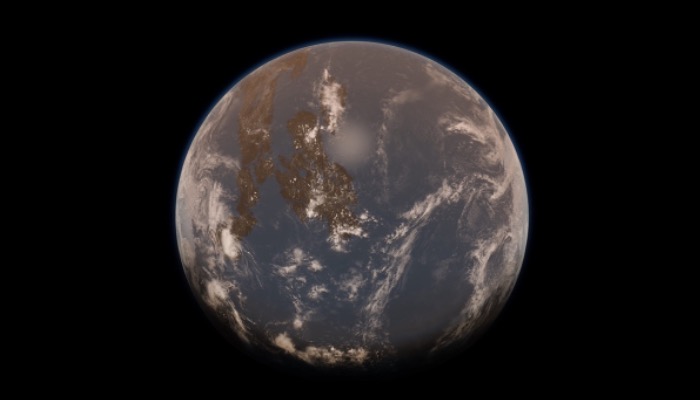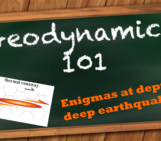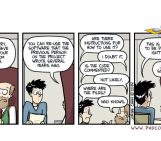
This week we have the second part of Junjie Dong’s insightful blog on modeling the early Earth. Following the discussion (“Modeling the Early Earth: Idealization and its Aims I”) about the major early Earth questions and challenges in modeling early Earth, Junjie now explores the imprtance of modeling as a scientific endeavor. He presents how one could more effectively model the early Earth.

Dr. Junjie Dong is a Stanback Postdoctoral Fellow in Comparative Planetary Evolution (3CPE) at Caltech. He uses high-pressure experiments, thermodynamic modeling and first-principles simulations to study the early Earth and planetary interiors.
The Kinds and Aims of Idealization
Before answering why modeling the early Earth is still useful, let me first introduce some conceptual resources—two kinds of idealization that are widely discussed in the philosophy of science (Weisberg, 2007): Minimalist Idealization and Galilean Idealization. Minimalist idealization aims to identify and include only the primary causal factors responsible for the behavior of the idealized system, excluding unnecessary details. Using the aforementioned sea-level model as an example, one could consider an asymptotically hypothetical scenario in which there was no dichotomy in the early Earth’s crust at all. Instead of having a lighter continental column and a denser oceanic column creating topographic relief that forms ocean basins, we imagine a uniform layer of mafic crust covering the Earth’s surface. We quickly realized that not much water would be needed to flood the early Earth’s surface. Unlike today, where water must fill ocean basins before reaching land, a thin layer of water could easily cover the Earth due to the lack of density contrast between oceanic and continental columns. This hypothetical scenario, while counterfactual, illustrates how little water might be needed to create a “water world” planet. It also shows that determining whether the surface of the early Earth is flooded with water involves balancing the amount of water on the surface with the topographic relief that the density contrast of the crust can support. I would consider this exercise to be profoundly heuristic; by applying this Minimalist idealization, we can learn how the idealized system behaves when certain effects, such as the presence of continents, are removed. While we may not know if or when the early Earth had only a uniform mafic crust, such an exercise allows us to explore the effects of continents without the need for a disputable parameterization of the growth curve of the continental crust.
Of course, to make a problem computationally tractable, we then resort to the second type of idealization, Galilean idealization (or Pragmatic idealization), where we introduce deliberate distortion, or a more familiar term if you will, parameterization, into the model (Weisberg, 2007). In this context, parameterization includes the temperature and density of the crust and the underlying mantle, the hypsometry of the continents, and the bathymetry of the ocean, etc. A more specific example would be to introduce distortion or parameterization to simplify the thermal evolution of the 3-dimensional heterogeneous interior of the Earth into a 0-dimensional curve of homogeneous temperature change as a function of temperature. Such Galilean idealization, with its emphasis on pragmatic utility and completeness, contrasts with Minimalist idealization, which focuses instead on explanatory power and the identification of causal factors. Here, the parameterization of the chemical buoyancy of crusts, the growth and topography of continents, and the shape of ocean basins fall into the realm of Galilean idealization. Improved parameterization can certainly provide a more detailed representation of a particular early Earth scenario (Figure 1), but may not always provide a deeper understanding, especially in the face of a near-absence of geological evidence.

Figure 1 Flooding of the Archean Earth with various surface configurations; figures based on the results of Dong et al. (2021). Abbreviation: fc: fraction of the present-day continents; fe: fraction of the present-day elevation.
By making you endure this mental gymnastics, I hope to provide a framework to understand what kinds of idealizations (without regard for whether the surrounding assumptions are true) are employed in early Earth models and why they are useful. The cognitive role of Minimalist idealization aids explanation by exploring how the idealized system behaves without the need for precise characterization (unlike Galilean idealization).
How to Model the Early Earth?
I would like to declare up front that no matter how much I enjoy championing idealization in modeling and why it helps us gain an understanding of the early Earth, I would still give priority to geological evidence and acknowledge how informative it can be as primary data. But the hard truth is that they are very, very difficult to find. Mark Harrison, in his recent book titled Hadean Earth (Harrison, 2020), emphasizes the need for “systematic, mission-scale geochronology surveys” to create a comprehensive archive of early Earth rock samples1. While geologists tirelessly search for these early vestiges, we as theorists must continue to improve our models. I certainly do not have any well-formulated answers as to how, but I would like to break the ice and share three thoughts.
- As computing power and techniques improve, so does our ability to refine the Galilean idealization or parameterization. We now have complex models that couple Earth’s interior dynamics with climate and biological evolution (Stern & Gerya, 2023), aiming for a more accurate representation of the planet as a whole. These efforts can be thought of as de-idealization, reducing distortions in the idealization to make the parameterization more representative of the real world. However, this may not always bring us closer to reality. Instead, it could be viewed as multi-model idealization, the third kind proposed by Weisberg (2007), where several related models are patched together to represent the real world. While productive, we must ensure that the compatibility of different components of such complex models is not assumed without scrutiny.
- Despite our desire for more geological records, the critical evidence needed to test a model may not come soon, if ever. Our shoulder devil insists that older rocks cannot be found and that the existing ones are too altered to be trusted, while our shoulder angel sees the presence (or absence) of certain geological records in a deterministic way, persuading us to go ahead and make the strongest propositions2. Many of us, including the young me every time I emerged from the Early Earth reading group, were torn between these two forces. After sharing my frustration with my friend Matthew Brewer, a philosophy of science graduate student, he wrote a paper on the subject! Brewer (2024) cautions against binary and reductionist thinking about the rock record, suggesting instead that we might simply take an agnostic approach to the limited geological evidence at our disposal as a scaffold for exploring auxiliary assumptions related to theories, models, or hypotheses. One could conditionally treat a hypothesis of geological evidence as true for the sake of later investigation of its auxiliaries. The specification of such auxiliaries allows for more informative contrastive testing of an initial hypothesis against alternatives, and in Brewer (2024)’s view, such a process would allow scientists to make real progress toward more refined theories that include a greater number of auxiliary hypotheses that more adequately describe the early Earth.
- So, how open are we to different hypotheses of the early Earth? According to Mark Harrison, probably not very much, and I quote (Harrison, 2020): “How much more would we know about the world today if the community had not rolled over and uncritically adopted […] paradigms […]? How many young scientists would have been inspired to pursue alternate explanations for lunar formation, or the origin of continental crust, or the lunar bombardment history had we not told them that these were solved problems?” I echo Mark Harrison’s concern and his emphasis on avoiding groupthink in early Earth research and seriously considering the new and sometimes even unorthodox theories. It is crucial to return to the basics, to the nulls, to simple models, rather than emphasizing what Feyerabend calls the “Consistency Condition”—demanding new evidence and interpretations to be consistent with accepted theories (Feyerabend, 1993). We must bear in mind that the ultimate goal here is not to preserve old understandings of the early Earth, but to find deeper and perhaps better ones. Only evidence and hypotheses that challenge well-established theories will provide the clues to early Earth questions that cannot be obtained otherwise.
1This is not easy in practice; challenges include lack of funding, and more importantly, who gets to decide the interpretation of a rock record in the event of a dispute, etc.
2For example, the absence of blueschist and ophiolite before the Neoproterozoic is sometimes taken as evidence that plate tectonics was not operating then. See more details in Brewer (2024).
References Brewer, M. 2024. https://philsci-archive.pitt.edu/23493/ Dong, J., Fischer, R. A., Stixrude, L. P., & Lithgow-Bertelloni, C. R. 2021, AGU adv., 2, e2020AV000323, doi: 10.1029/2020AV000323 Feyerabend, P. 1993, Against Method, 3rd edn. (Verso) Harrison, T. M. 2020, in Hadean Earth (Springer), 273–286, doi: 10.1007/978-3-030-46687-9 12 Stern, R. J., & Gerya, T. V. 2023, in Dynamics of Plate Tectonics and Mantle Convection (Elsevier), 295–319, doi: 10.1016/B978-0-323-85733-8.00013-5 Weisberg, M. 2007, J. Philos., 104, 639, doi: 10.5840/jphil20071041240




